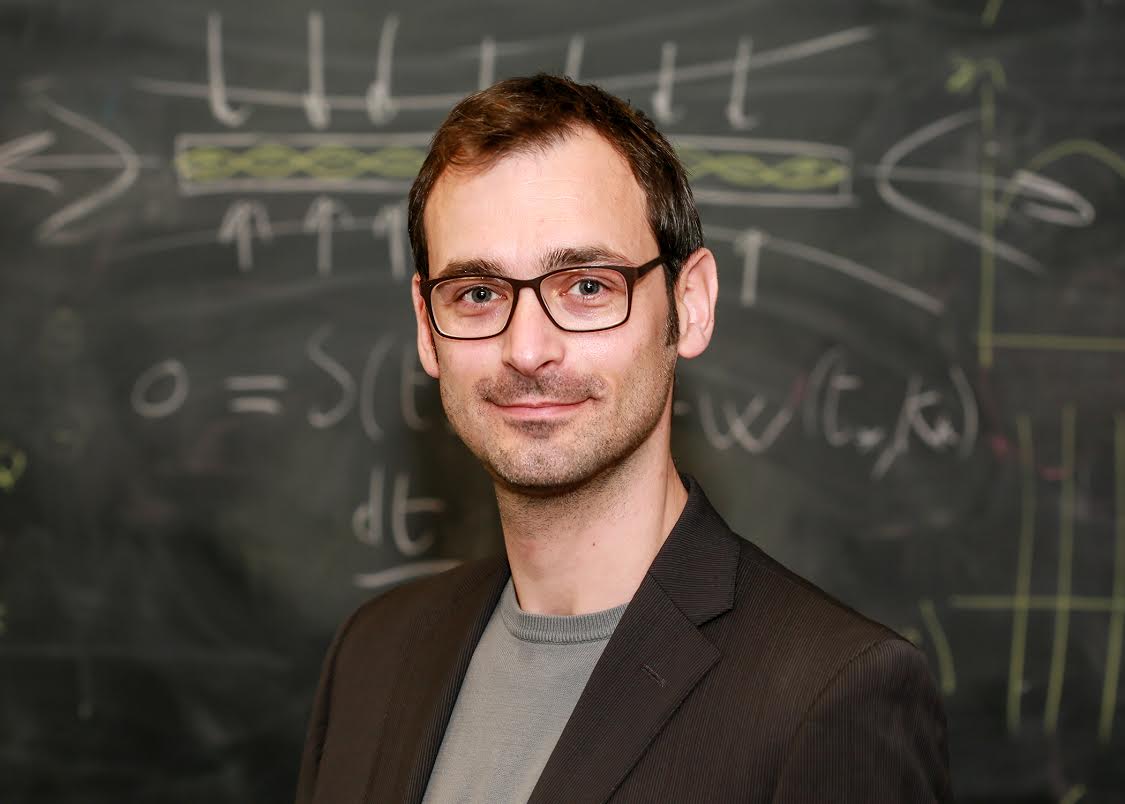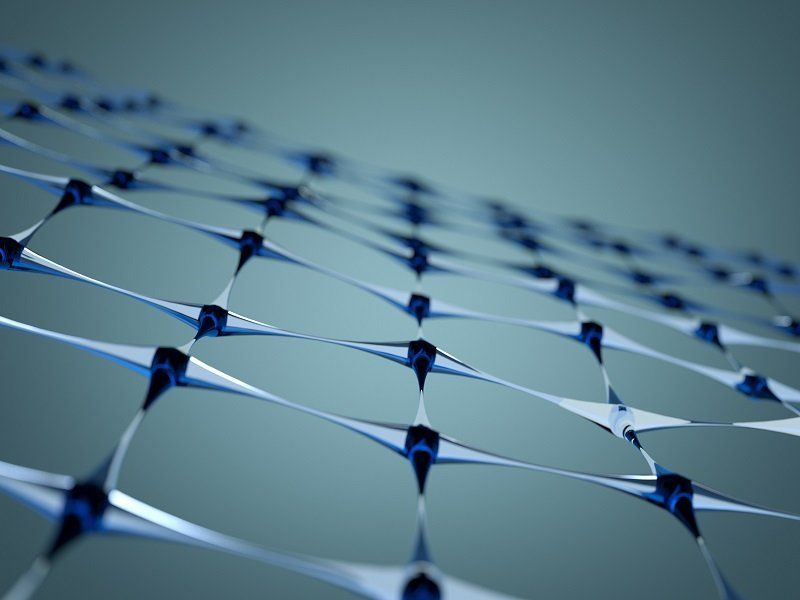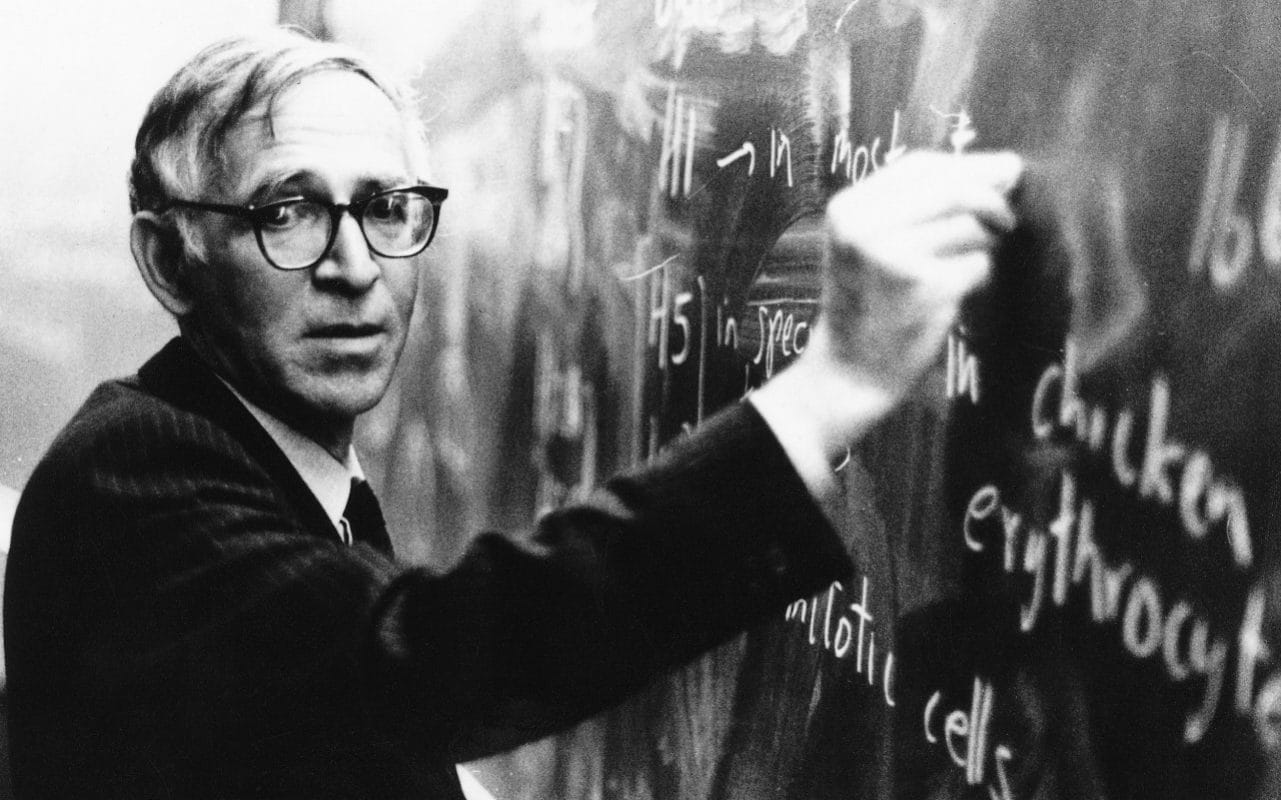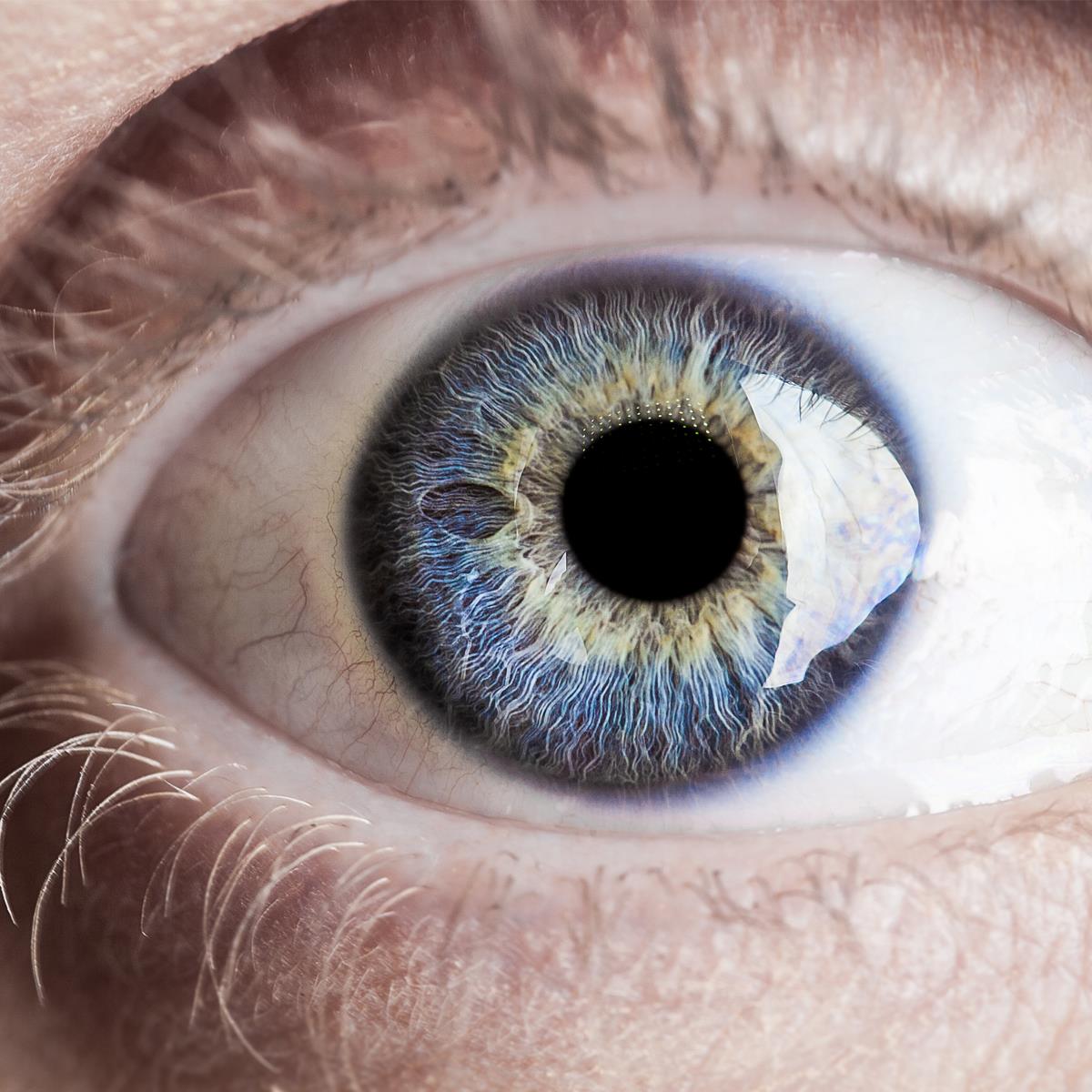Page 9730
Nov 22, 2018
Researchers propose an explanation for the mysterious onset of a universal process
Posted by Genevieve Klien in category: futurism
Magnetic reconnection takes place when the magnetic field lines embedded in a plasma—the hot, charged gas that makes up 99 percent of the visible universe—converge, break apart and explosively reconnect. This process takes place in thin sheets in which electric current is strongly concentrated.
According to conventional theory, these sheets can be highly elongated and severely constrain the velocity of the magnetic field lines that join and split apart, making fast reconnection impossible. However, observation shows that rapid reconnection does exist, directly contradicting theoretical predictions.
Nov 22, 2018
The origins of asymmetry: A protein that makes you do the twist
Posted by Genevieve Klien in category: biotech/medical
Asymmetry plays a major role in biology at every scale: think of DNA spirals, the fact that the human heart is positioned on the left, our preference to use our left or right hand … A team from the Institute of biology Valrose (CNRS/Inserm/Université Côte d’Azur), in collaboration with colleagues from the University of Pennsylvania, has shown how a single protein induces a spiral motion in another molecule. Through a domino effect, this causes cells, organs, and indeed the entire body to twist, triggering lateralized behaviour. This research is published in the journal Science on November 23, 2018.
Nov 22, 2018
How the environment is connected to economic growth — and how to boost both
Posted by Genevieve Klien in categories: business, climatology, economics, sustainability
Earth’s natural resources largely determine the global economy’s ebb and flow. As such, the effects of climate change continue to cause concern among economists and environmentalists alike.
In 2018, professors William Nordhaus and Paul Romer won the Nobel Prize in Economics for their work exploring how climate change affects economic stability. Ultimately, the pair’s research found the phenomena to be closely linked. The case for investment in sustainable ventures is clear: Without such commitments, both the planet and the global economic ecosystem will suffer.
Sustainable investments may jump start the slow process of changing consumer habits. Below, we examine the economy-boosting benefits of environmentally friendly business models — and how sustainable investment plays an important role.
Nov 22, 2018
When graphene and seaweed combine, something amazing happens
Posted by Genevieve Klien in categories: 3D printing, biotech/medical
Researchers have combined a form of graphene with a seaweed-derived substance to create a whole new smart material with multiple uses.
A number of biomedical applications have begun to adopt hydrogel materials made from alginate, a natural material derived from seaweed. Yet in their current form, these hydrogels are incredibly fragile, meaning they’re not very useful in the long term.
However, researchers at Brown University have found a way to drastically improve their strength – in addition to making them more intricate in shape – using graphene oxide (GO) and 3D printing.
Continue reading “When graphene and seaweed combine, something amazing happens” »
Nov 22, 2018
Sir Aaron Klug, OM, scientist who won a Nobel Prize for his work on electron microscopy and chromosomes – obituary
Posted by Genevieve Klien in categories: biotech/medical, chemistry
Sir Aaron Klug, OM, who has died aged 92, won the 1982 Nobel Prize in Chemistry for his development of crystallographic electron microscopy and his work in charting the infinitely complex structures of chromosomes, the body’s largest molecules.
Human genes are made of nucleic acids such as DNA (deoxyribonucleic acid). The acids are too small to be seen with an ordinary microscope and too large to be studied by examining them under X-rays.
Nov 22, 2018
This video is the seventh in a multi-part series discussing computing and the final discussing classical computing
Posted by Ankur Bargotra in categories: computing, futurism

The Future of Classical Computing (Heterogeneous Architecture – CPUs, GPUs, FPGAs, ASICs,…) https://www.facebook.com/singularityprosperity/videos/440265…prosperity
In this video, we’ll be discussing what heterogeneous system architecture is and how it is going to shape the future of classical computing!
[0:27–6:40] Starting off we’ll look at, what heterogeneous system architecture (HSA) is and two new types of computing devices, FPGAs & ASICs.
Nov 22, 2018
Dual-Action Antibody Might Improve Immunotherapy Outcomes
Posted by Nicola Bagalà in categories: bioengineering, biotech/medical
In a study published in the journal Immunology, Southampton University researchers have shown that a new antibody that they have engineered is able to combine two different anticancer approaches: depleting regulatory T cells and activating killer T cells [1].
Abstract
The costimulatory receptor 4-1BB is expressed on activated immune cells, including activated T cells. Antibodies targeting 4-1BB enhance the proliferation and survival of antigen-stimulated T cells in vitro and promote CD8 T cell-dependent anti-tumor immunity in pre-clinical cancer models. We found that T regulatory (Treg) cells infiltrating human or murine tumors expressed high amounts of 4-1BB. Intra-tumoral Treg cells were preferentially depleted by anti-4-1BB mAbs in vivo. Anti-4-1BB mAbs also promoted effector T cell agonism to promote tumor rejection. These distinct mechanisms were competitive and dependent on antibody isotype and FcgR availability. Administration of anti-4-1BB IgG2a, which preferentially depletes Treg cells, followed by either agonistic anti-4-1BB IgG1 or anti-PD-1 mAb augmented anti-tumor responses in multiple solid tumor models.
Continue reading “Dual-Action Antibody Might Improve Immunotherapy Outcomes” »
Nov 22, 2018
Big test coming up for tiny satellites trailing Mars lander
Posted by Genevieve Klien in categories: entertainment, satellites
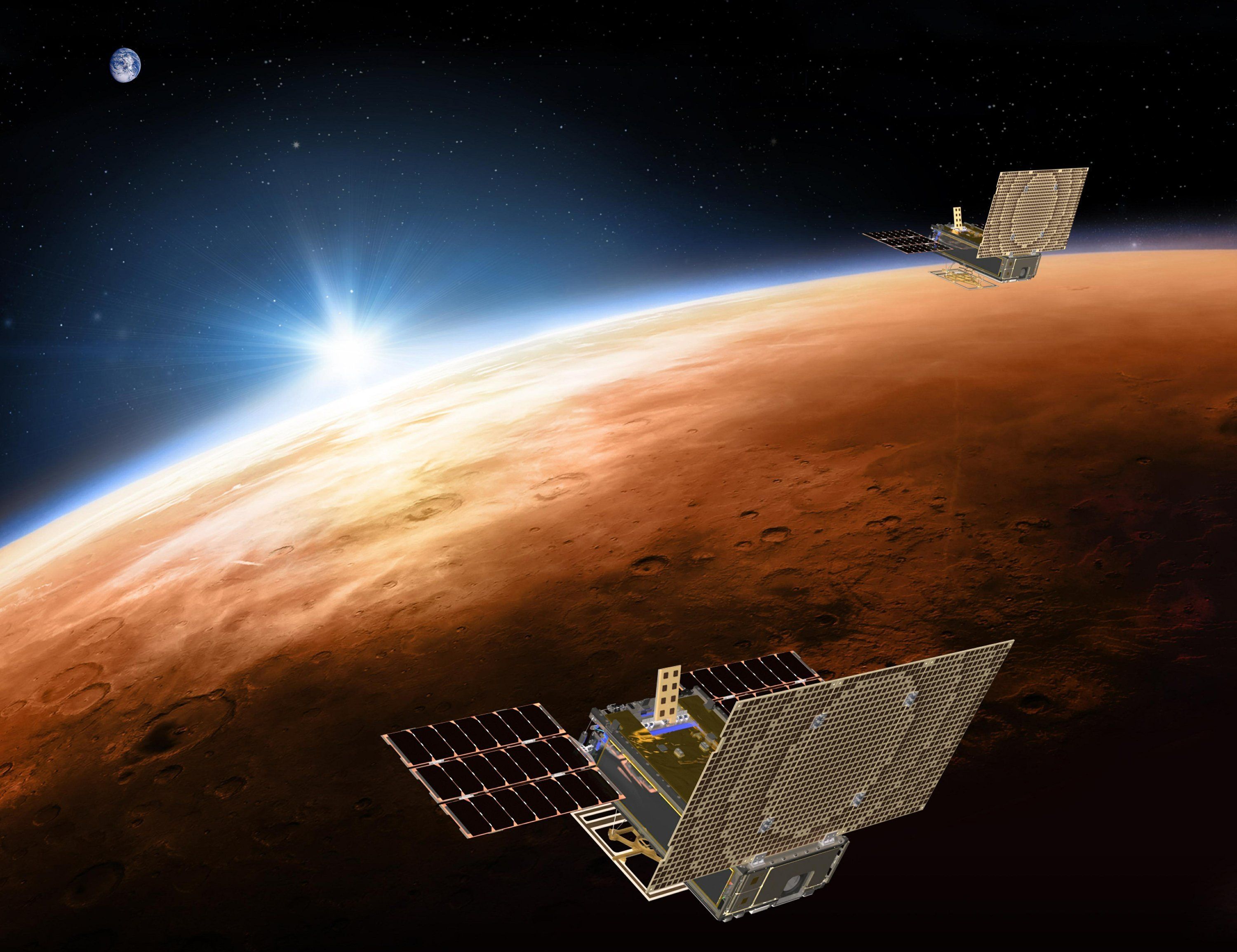
CAPE CANAVERAL, Fla. (AP) — A pair of tiny experimental satellites trailing NASA’s InSight spacecraft all the way to Mars face their biggest test yet. Their mission: Broadcast immediate news, good or bad, of InSight’s plunge through the Martian atmosphere on Monday. Named WALL-E and EVE after the main characters in the 2008 animated movie, the twin CubeSats will pass within a few thousand miles (kilometers) of Mars as the lander attempts its dicey touchdown. If these pipsqueaks manage to relay InSight’s radio signals to ground controllers nearly 100 million miles (160 million kilometers) away, we’ll know within minutes whether the spacecraft landed safely.

